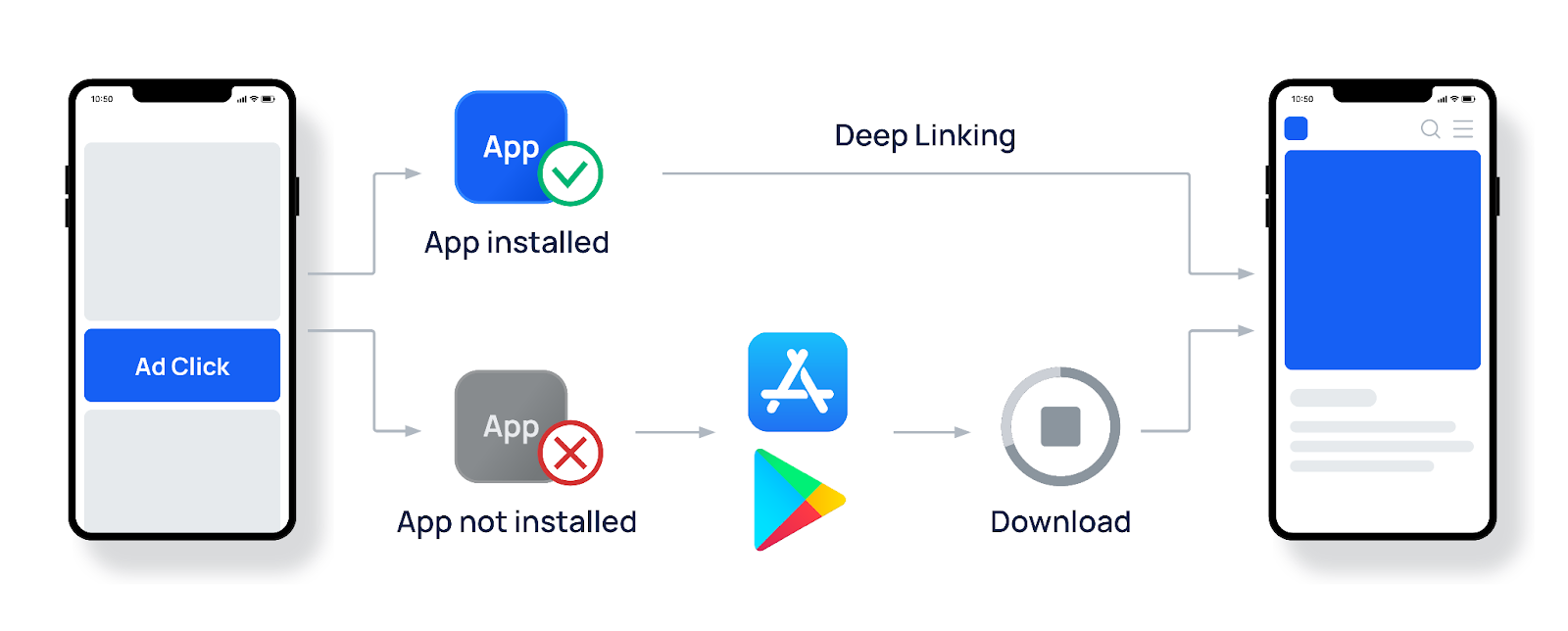Ever found yourself navigating the labyrinthine world of the internet, hoping to land directly on the precise information you need, only to be thwarted by a general homepage? What if you could control how users interact with your website, guiding them to the exact spot that matters most, dramatically improving their experience and simultaneously boosting your site's visibility?
The digital landscape is a dynamic arena where websites constantly vie for attention. In this environment, the ability to strategically direct users to specific content becomes a powerful tool for enhancing your online presence. One of the most effective, yet often underutilized, methods for achieving this is the implementation of deep hot links.
Deep hot links, also known as deep linking, represent a sophisticated approach to online content strategy. They allow you to bypass the conventional homepage entry point and transport users directly to specific sections or content within a webpage. This capability is not merely a technical detail; it's a strategic maneuver that can significantly impact your website's traffic, search engine optimization (SEO) rankings, and user experience.
But what exactly are deep hot links, and how can they be leveraged effectively? The following table offers a detailed overview of deep linking technology and its applications:
| Feature | Description |
|---|---|
| Definition | Deep hot links are hyperlinks that direct users to specific content within a webpage, bypassing the homepage or main sections. |
| Functionality | They use specific URLs that include anchors or fragments (#) to target specific elements like headings, paragraphs, or media. |
| Benefits |
|
| Implementation |
|
| Best Practices |
|
| Examples |
|
| SEO Impact |
|
| Challenges |
|
| Tools |
|
For more information, see: Moz.com
This article is crafted to act as a comprehensive guide, aiming to unravel the complexities of deep hot linking, exploring its benefits, challenges, and best practices. By the end, you will have a clear understanding of how to effectively use deep hot links to transform your website's performance.
Deep hot links aren't just about copying and pasting URLs or embedding images it's about understanding how content is shared across platforms and how you can use it to your advantage. Whether youre trying to boost traffic to your website, protect your content from unauthorized use, or simply learn more about how the internet works, deep links offer a potent strategy. They can significantly impact your website's traffic, SEO rankings, and user experience. Deep links can help funnel traffic directly to specific products, services, or informational pages, enhancing conversion rates.
When other websites use deep hot links to link to your content, it signals to search engines that your site is authoritative and trustworthy, boosting your SEO rankings. A robust internal linking structure using deep links is crucial for website architecture and helps search engines understand the relationships between different pages. If your site offers focused, quality content that results in a link from a reputable source, such as a mention in publications like the New York Times, search engines will perceive your site as noteworthy, further enhancing its ranking.
The significance of deep hot links is multifaceted. They play a crucial role in improving user experience and driving traffic to specific content. By allowing users to navigate directly to relevant pages, deep hot links help reduce bounce rates and encourage users to engage with a website more thoroughly. Moreover, deep hot links can be crucial for directing users to specific products or services, thereby enhancing conversion rates.
Understanding deep linking technology has become a necessity in the ever-evolving digital sphere. On November 5, 2024, it became clear how websites can link directly to specific sections or content within a webpage.
Consider the following strategies to maximize the benefits of deep hot links while minimizing potential drawbacks:
- Strategic Content Planning: Before anything, analyze your content structure. Decide which sections benefit most from direct linking. Prioritize your core offerings, key informational pages, and any high-conversion areas.
- Anchor Tag Implementation: Ensure that your HTML uses descriptive and keyword-rich anchor tags (IDs) within your content. For example, instead of a generic ID like "section1", use something like "best-running-shoes-review".
- Compelling Anchor Text: Craft anchor text (the clickable text of your links) that accurately reflects the target content. Avoid generic phrases. Instead, use phrases that entice the user and reflect the linked content, for instance, "Learn about our latest product".
- Contextual Relevance: Always link to content that's relevant to the source page. This improves user experience and signals to search engines that your links are valuable.
- Mobile Optimization: Ensure deep links work flawlessly on all devices. Test the links on mobile phones and tablets to guarantee users have a seamless experience.
- Website Speed Considerations: A fast-loading website is crucial. Slow-loading pages can frustrate users and make deep linking less effective. Optimize images, use caching, and choose a reliable hosting provider.
- Internal Linking Strategy: Integrate deep links into your internal linking strategy. Link between relevant pages on your site to help search engines understand the relationships between different content pieces.
- External Outreach: Use deep links in your outreach efforts. When sharing content on social media or in email campaigns, direct users to the exact section or product they want.
- SEO Optimization: Implement structured data markup (Schema.org) to help search engines better understand your content and deep links, potentially increasing click-through rates from search results.
- Analytics Tracking: Use analytics tools like Google Analytics to track the performance of your deep links. Analyze which links are driving the most traffic and conversions.
- Monitor and Refine: Regularly review your deep links and update them as your content evolves. Broken links and outdated information can negatively impact user experience.
- Avoid Overuse: While deep linking is beneficial, avoid overuse. Too many links can be overwhelming and may negatively affect readability. Prioritize the links that provide the most value to your users.
Backlinks also play a significant role in driving traffic. Backlinks can also drive traffic to a website by providing users with a direct link to the site. When users click on a backlink, they are taken directly to the linked website, increasing the chances that they will explore the sites content further and potentially convert into customers. Gathering as many quality backlinks to your site as possible is an essential part of SEO. You get these when other websites link to your site. Similarly, when you link to other sites on your site, they obtain backlinks from you. Collecting external links is important for generating traffic to your site as it helps boost SEO efforts. You cant make this happen, but you can influence it by producing great content that other website will link to.
Analyzing traffic sources helps in identifying trends, improving user experience, and ultimately driving more targeted traffic to your website. For example, if a significant portion of your traffic comes from a particular social media platform, you can invest more resources in engaging with your audience on that platform to further boost traffic. Dig into the traffic data for any website and find growth opportunities for yours. Try the free version of Ahrefs traffic checker. Use promotional offers and discounts; using promotional offers and discounts is an effective way to increase website traffic and attract new customers.
By meticulously applying these strategies, you can use deep hot links to enhance the user experience, boost your SEO rankings, and ultimately drive more traffic and conversions to your website. This comprehensive approach ensures that your website is not just a collection of content, but a dynamic, user-centric platform that stands out in the competitive online landscape.


